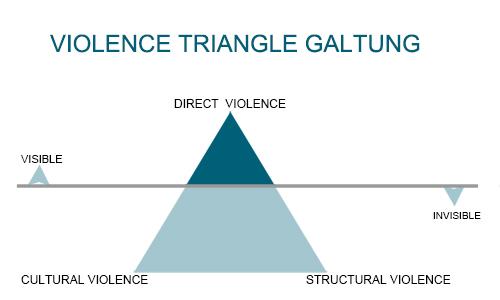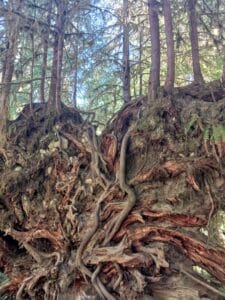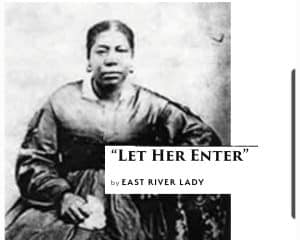#Blacklivesmattertochrist organized a letter-writing campaign to the LDS church calling for anti-racism training to be included in the church’s curriculum and manuals. You can find out more about them here.
What are the two great commandments? To love God and to love your neighbor as yourself. And who is my neighbor?
I grew up in a loving LDS family. Our home was open to all and each year we hosted an exchange student (or two or three) from all over the globe. We believed that God loved all their children: “all are alike unto God.”
We are created in God’s image. And every image I saw was a white-bearded male. That reality just wasn’t part of our conversation.
My grandma would tell stories about moving from Logan, Utah to Fort Benning in Georgia and her shock at not being able to use the same drinking fountains as Black citizens or the overt racism she saw in her wards there. But there was no similar outrage for the exclusion of Black members from the priesthood and temple for generations. Only rejoicing after “God” had lifted the ban.
In order to truly love our neighbor we must take the time and make the effort to get to know our neighbors.
Right now Black communities are in pain. They are shouting out their grief in word and action. Are we listening? What are we doing as a church to listen, love, and mourn with those that mourn?
I am a white woman. I have never experienced the sting of racism or struggled under its oppressive rule. But I hope to embrace my role as a white person in the individual and collective work I can do in dismantling white supremacy all around me as a way to do less harm to my Black siblings in the church and wider community.
President Russell M. Nelson recently coauthored a letter with the NAACP to “call on government, business and educational leaders at every level to review processes, laws and organizational attitudes regarding racism and root them out once and for all.1” I likewise call on the leaders of the church and members at every level to examine how racism has in the past and continues now to have a foothold within this organization.
I believe understanding and addressing our history is a vital first step. In The Book of Forgiving by Desmond Tutu and Mpho Tutu, they lay out a path for forgiveness grounded in their experiences leading the Truth and Reconciliation Committee in South Africa after apartheid. Because we are all human, they say, we are all inherently good and inherently flawed. And we are all in need of forgiveness.
“Forgiveness does not mean forgetting the pain they have suffered, pretending it didn’t happen, or that it wasn’t really as bad as it was. The cycle of forgiveness can be activated and completed only in absolute truth and honesty… Begin by first letting the truth be heard in all its rawness, ugliness and messiness.2”
The history of racism in the church is raw and messy. Historian W. Paul Reeve describes the LDS racial story in three phases3: 1) open to all races 2) segregated priesthood and temples, 3) open to all races.
He is careful to place the LDS narrative within the racial context of the time. He highlights the concept of whiteness and the Mormons’ desire to claim whiteness. He details Black men who were ordained to the priesthood in the early church and some of the forces that brought about the reversal of that practice. Importantly, he describes how leaders after Brigham Young reconstituted history and instituted a new narrative suggesting racial restrictions were always in place and sanctioned by God.
Priesthood and temple restrictions are good examples of structural and cultural violence in the LDS church. Johan Galtung, a Norwegian sociologist often described as the Father of Peace Studies, defines violence as “avoidable insults to basic human needs, and more generally to life.4”
This broadens the understanding of violence from a physical assault to a wider definition of deprivation of fundamental needs including survival, well-being, identity/meaning, and freedom needs. The way society is arranged and the systems that constrain and reduce the opportunities and hopes of a group of a people constitute structural violence. The temple and priesthood ban was especially pernicious because this discrimination not only classified Black people as second-class on earth, but also denied them access to eternal ordinances. Brigham Young wrongly posited that people of African descent were cursed because of Cain’s transgression. This contradicted a theology of responsibility for one’s own sins and a new theory of premortal infirmity took hold. These ideas are examples of cultural violence, defined as “any aspect of culture that can be used to legitimize violence in its direct or structural form.5”

Galtung goes on to describe how, “Cultural violence makes direct and structural violence look, even feel, right – or at least not wrong.6” Besides structural violence within the church (priesthood/temple ban, no opportunity for leadership, discouragement of interracial marriage, etc) the cultural violence became justification for upholding structural violence within the wider community. Joanna Brooks lists some examples, such as supporting segregation, opposing the civil rights movement, and organizing to prevent integration of neighborhoods. Brooks points out, “Systems as pervasive as white supremacy do not just transform quietly: they must be recognized, investigated, understood, and intentionally abandoned or dismantled.7”
Publishing the gospel topic essay on Race and the Priesthood was a good step, but many Black voices believe this is not enough. “When the Church refuses to give an apology, it leaves its millions of members left to question whether this was really God’s will rather than human racist actions,” said Professor Darron T. Smith, a scholar of race in LDS life8. “A [2012] survey revealed that the majority of Mormons no longer believe that Blacks were cursed, but most of them still continued to hear these teachings in their church. Black Mormon members in the survey overwhelmingly asked for a public, unambiguous apology.”
Black members speak of the pain of facing racism in a place where all belong to Christ.
Cheryl Neufville Etiang shares,
“Most of my experiences of racism have been from members of the church. When I have expressed my pain and concerns, I am often gaslighted by members of my faith. Though the gospel supports inclusivity, the culture of the church and often members do not act in unison with these teachings… I do not believe anyone should have to endure racism within the walls where they worship. It is often hard to grow spiritually in such environments. I hope that the church develops action plans to support their stance on anti-racism.9”
Alixa Brobbey captures her experience in the poem Bittersweet10, which in part reads:
They say that heaven is a pure white fruit,
And I must pass through darkness to get there.
Some days what they mean is that I must pass
through life in this dark body before inheriting one of theirs.I think I tasted heaven once, but it wasn’t entirely sweet.
First, I walked a lonely path, on my head a crown of curly thorns.
Someone handed me a map to guide me there,
But the iron burned me and called me cursed.
Many Black members share how disavowed theories are still perpetuated. In a meeting with an Institute teacher Mariah Bowers describes,
“Then he proceeds to use the Bible,the Book of Mormon, and any other sources he could find to prove that we were indeed relatives of Cain and how our darker skin is the mark and how if we see, because of the lift of the curse, we are actually over years getting lighter… I never thought I would see a man, my age, with such power granted to him from a calling be able to miscue scriptures and taint young peoples minds in 2020.11”
In order to truly keep our covenants to bear one another’s burdens, we must find ways to help people be truly seen, heard and known.
Ebony shares, “Now 14 years a member and far away from the safety of my small predominantly black branch, I feel like I am still begging the church to see me.12”
Cultural violence in the church isn’t just a relic from the past. Culturally violent constructs continue today. Last year, the Come Follow Me manual on the Book of Mormon included this quote, “…The dark skin was a sign of the curse…” The online manual removed the quote, but the print version had already gone out. Furthermore, Reverend Dr. Fatimah Sellah, co-author of The Book of Mormon for the Least of These, explains how the new statement in the manual is also problematic.
“I kindly ask the leaders of the Church to closely examine the extensive and continuation of prejudice and discrimination that now accompanies the new corrected statement. The harm comes from stating that a whole group of people, in its entirety, is cut off from the Lord. God is not to be bound, tamed and restricted… A doctrine becomes quite dangerous when we, as God’s children, start condemning one another in gross generalizations, when we start saying that God is taking sides.13”
This year, the church published a list of approved artworks for building foyers. Esther Candari, an LDS artist of color, commented,
“I personally do not believe that depicting Christ as white is wrong, what I do believe is wrong, and so subtly powerful, is depicting him, and anyone in a position of power in conjunction with him, as PRIMARILY or ONLY Caucasian.14”
Another artist of color, Michelle Franzoni Thorley, explains,
“Why is it important to have a diversity of skin color, gender, ethnicity, and backgrounds in LDS art? First, let me ask you this, What is possible for the future of our church? What is divinely designed for the future of our church? It is diversity. But how can we create diversity? We can create diversity by building the possibility for it through art. By anticipating and planning for it. This is Christ’s church; we all need to be represented here because we all belong here. We are starting to see more representations of people of color painted by white LDS artists. While this movement is wonderful it is only the beginning of inclusion. We have come to a place in history where people of color don’t just want their stories told, we want to tell our own stories, dreams, and perspectives using our own voices.15”
Galtung includes art as one of the categories of cultural violence . It seems strange to describe art in terms of violence, but returning to Galtung’s definition of violence as the deprivation of needs, this includes the need for identity and meaning. The negation of this is alienation and is often manifest as, “second-class citizenship where the subjected group is forced to express dominant culture.16” I see this not only in restrictions of artwork but also in musical instruments and musical selections approved for Sacrament meeting, and other expressions of dominant culture equated with righteousness.
Why should it matter what we say (or don’t say) about race? Can’t we just move forward loving everyone?
I like how Reeves explains the importance of our stories:
The stories that we tell matter because skin color is not a curse, nor was it ever a curse, and to suggest otherwise is to perpetuate white supremacy. To suggest otherwise is to suggest that white is normal and other skin tones are a deterioration away from normal.
The stories that we tell matter because when we perpetuate a false racial history we perpetuate racism.
The stories that we tell matter because evidence matters, and to suggest that the racial and temple restrictions were in place from the beginning is to argue against undeniable evidence to the contrary.
The stories that we tell matter because to argue that the racial priesthood and temple restrictions began with a revelation is simply false.
The stories that we tell matter when they lead us to perpetuate a subtle form of racism.
The stories that we tell matter because sometimes Latter-day Saints are still more invested in protecting Brigham Young and other leaders from their statements on race than they are in defending our Black Latter-day Saint brothers and sisters against racism.
The stories that we tell matter because the lives of Black people matter to Christ. As believers in Christ, it is our obligation to see the diversity of God’s family, celebrate its cultural, ethnic, and racial differences, and ensure that our brothers and sisters in Christ are treated “all . . . alike.”17
At the Be One celebration, Elder Dallin H. Oaks called for the abandonment of all prejudice – both personal and institutional. He also claimed that justifications for the priesthood ban preached by past leaders were “promptly and publicly disavowed.” Yet even today, the justifications persist.
“However, most in the Church, including its senior leadership,” Oaks said, “have concentrated on the opportunities of the future rather than the disappointments of the past… To concern ourselves with what has not been revealed or with past explanations by those who were operating with limited understanding can only result in speculation and frustration.18”
For many members, the frustration is that despite historical evidence on the origin of the priesthood/temple ban, falsehoods and speculation continue to be perpetuated. And these will continue until we work as a community to completely dismantle the cultural and structural violence in our church. We are all responsible for doing this work because we are all part of this body of Christ. Each member matters. Each cry of pain must be heard. Because of the way the church is organized I believe it is especially imperative for our highest leaders to directly address this issue at General Conference and to address it again and again until every form of cultural and structural racism is rooted out of every part of the church.
Shortly after the church and NAACP published its call to root out racism, Wil Colom, special counsel to the NAACP president, expressed his desire for the church’s deeds to match their words. The NAACP is “looking forward to the church doing more to undo the 150 years of damage they did by how they treated African Americans in the church and by their endorsement of how African Americans were treated throughout the country, including segregation and Jim Crow laws.19”
Change does not happen overnight. There is much work ahead, and as Colom said, “It’s time now for more than sweet talk.”
Although not the focus of this letter, I feel it’s also important to name the violence experienced by American Indians20. This happens in the way church members speak of America as the promised land and its “discovery” and formation as divinely inspired and a necessary part of the restoration. Through the early history of the church this cultural violence was closely tied to the direct, physical violence against tribes in Utah. And structural violence that prohibited American Indians from fully actualizing their culture and religious practices persisted late into the 20th century. While we no longer state that Lamanites are the primary ancestors of American Indians, we have not apologized for the years of violence nor committed to telling a more complete history.
I believe leaders of the past and present deserve mercy. We are all human. We are all learning. I hope that leaders can model repentance and restitution and help move the church forward to a place of healing, health, and love. As Tutu and Tutu point out, “Forgiveness does not erase accountability or relieve responsibility.21” It’s only in absolute truth of where we have been that we can begin to set things right. I echo psychologist Tara Brach: “Until we tell the truth, we deny ourselves the beauty of redemption, the beauty of restoration.22”
The following is a list of suggestions from black members of steps the church can take (from Joanna Brooks The Possessive Investment in Rightness: White Supremacy and the Mormon Movement)
- Cast a Black Adam and Eve (or an interracial couple) in the film shown to faithful members in LDS temples.
- Use more African American faces in Church art and manuals and display more artwork depicting Christ as he would appear: as a Middle Eastern Jewish man.
- Pick more Blacks for highly visible leadership positions—if not an apostle, at least in the First Quorum of the Seventy (members of which are General Authorities) or in the general auxiliary presidencies.
- Repudiate and apologize for the faith’s past priesthood and temple ban on Blacks, which the Church lifted in 1978.
- Show the documentary film Nobody Knows: The Untold Story of Black Mormons to every all-male priesthood quorum, women’s Relief Society class, and Young Men and Young Women groups.
- Quote from the Church’s Gospel Topics essay “Race and the Priesthood” regularly at LDS general conference and translate it into all the languages that the Church uses to communicate with its global membership.
- Direct that the essay be read from the pulpit in every Mormon congregation and mission in the world.
- Have the Book of Mormon scripture found in 2 Nephi 26:33—“all are alike unto God”—be a yearlong Young Women or Primary theme and make it part of the curriculum to talk about the sin of racism.
- Bring more Blacks to LDS Church–owned Brigham Young University as students and faculty, while providing sensitivity training for all students about racial issues and interactions with people of color.
- Teach children about heroic Black Mormon lives, such as LDS pioneers Jane Manning James and Elijah Abel.
- Expand the LDS hymnbook to include more diverse songs and styles.
- Enlist more people of color in the Mormon Tabernacle Choir.
- Invite the choir from the Genesis Group—a longtime Utah-based support organization for Black Mormons and their families—to sing at general conference.
- Use the Genesis Group to assist in improving relationships with the African American community.
- Give the Genesis Group greater authority to exist in all states and to visit wards and assist lay bishoprics in how to avoid and overcome racism in their congregations.
- Create a Church-sponsored Mormon and Black website akin to the one found at mormonandgay.org.
- Treat the members of the Genesis Group’s presidency as an auxiliary, seating them on the stand with other high-ranking authorities during general conference—and invite at least one of them to speak during the sessions.
- Provide training on racial issues for newly-called mission presidents.
- Include a mandatory class at missionary training centers that teach the “Race and the Priesthood” essay so missionaries are better prepared when they go out to preach.
Footnotes:
2The Book of Forgiving p37
5Galtung p291
6Galtung p291
16Galtung p293
18President Oaks remarks from Be One Celebration
19Despite joining President Nelson in call to end racism, NAACP would like to see the LDS Church do more
20Here is a fuller perspective from a Native American voice.
21The Book of Forgiving p58






3 Responses
great list of actionable suggestions
Tirza, it is clear you have spent a lot of time researching and pondering this issue. Thank you for sharing your work with us. It seems so obvious now that you have pointed it out, but I never really thought about just how applicable the Tutus’ book would be to our church culture.
Tirza, this is such an impressive post about this topic. All the structural and cultural violence we have done to people of color in our church is sickening. At the very least, an apology is due for the harmful practices and teachings perpetuated by the institution. But no. Apparently the church never apologizes. That’s a very sad, unhelpful, and unchristian model.